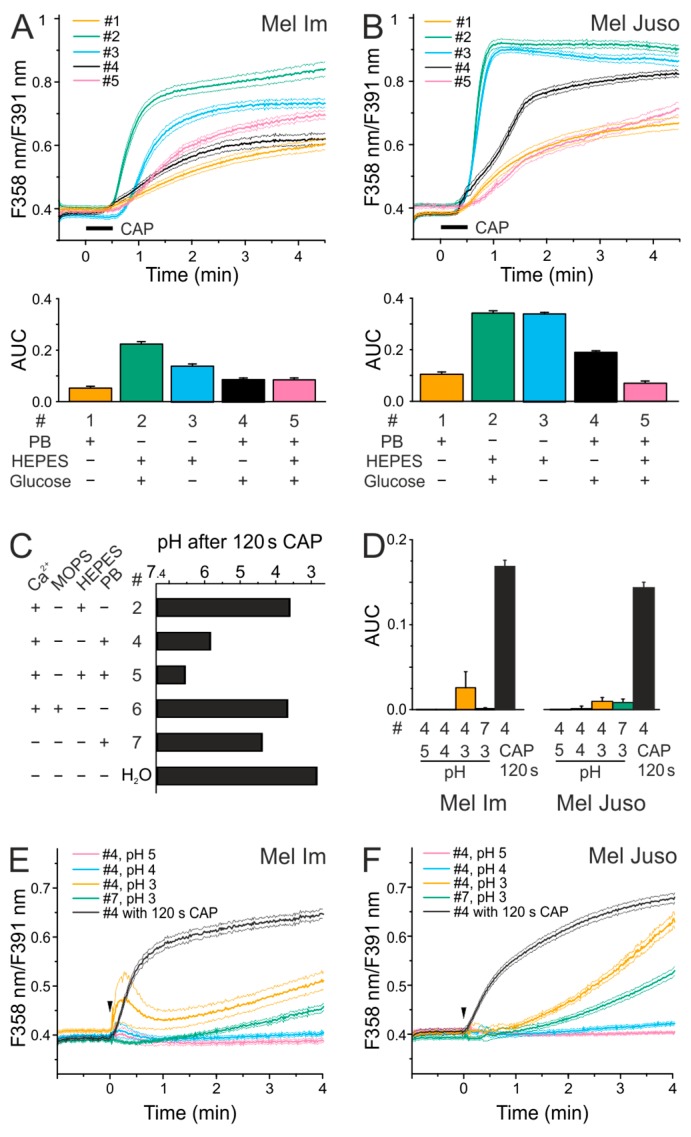Figure 1.
The intensity of cold atmospheric plasma (CAP)-induced Ca2+ influx depends on the composition of the solutions and CAP causes an acidification. (A,B) Analysis of the effect of different solutions on 30 s CAP-induced changes in cytoplasmic Ca2+ level of melanoma cells. (A) Mel Im (n = 137–660) and (B) Mel Juso (n = 86–500) cells were washed in the Ca2+-containing solutions 1, 2, 3, 4, or 5 (#4 data identical to Figure 1 in [26]). After the removal of the respective solutions, cells were treated with 30 s CAP. Traces represent mean and the 99% confidence interval (CI) of the mean. (C) The solutions #2, 4, 5, 6, 7 or bidestilled water (pH 7.4) were exposed to 120 s CAP as 7 × 20 µL drops. Measurement of pH was performed in a 1.5 mL reaction vessel. Data are shown as mean. (D–F). Analysis of the effect of an acidic pH on cytoplasmic Ca2+ levels of Mel Im ((D,E), n = 485–999) and Mel Juso ((D,F), n = 275–376) cells. 100 µL of pbECS (#4; pH 3,4,5) and pbECS − Ca2+ (#7; pH 3) was added onto melanoma cells (indicated by an arrow). The application of 100 µL of 120 s CAP-treated pbECS (#4) to Mel Im ((D,E), n = 485) and Mel Juso ((D,F), n = 321) cells served as control. Phosphate-buffered (PB), area under the curve (AUC), fluorescence intensity (F).

